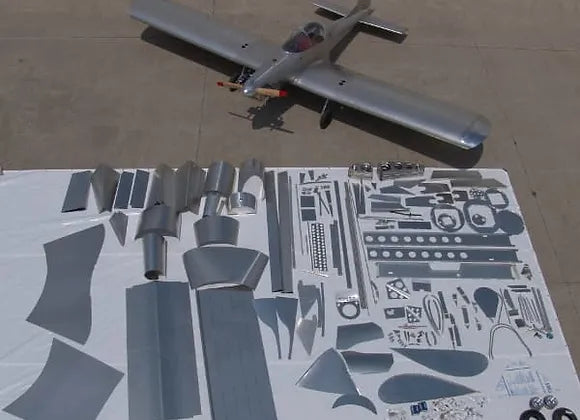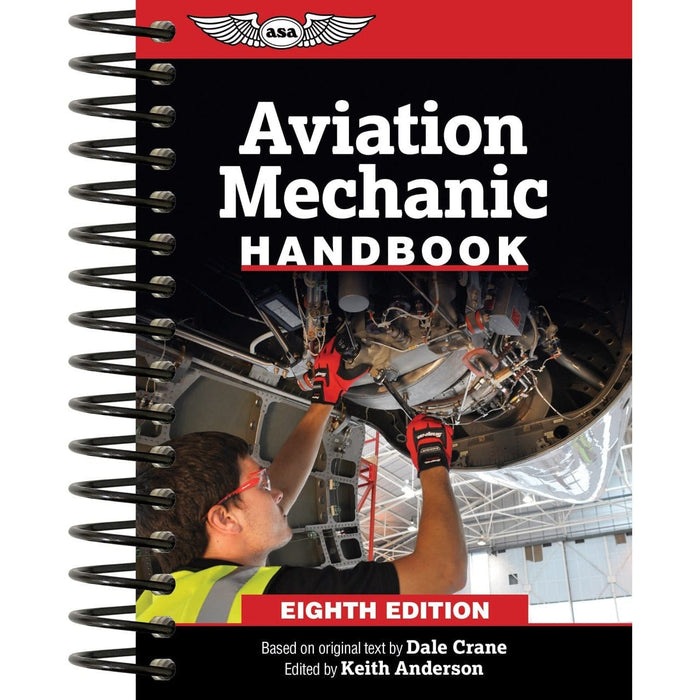Hummel H5 (10 Things You Need to Know)
On the hunt for an aircraft plan or kit that strikes that just right balance of affordability, performance and dependability? The Hummel H5 is a definite must-consider contender. It is brought to us by a small American company committed to providing plans and kits with flexible building options for customers on a modest budget who are looking for a way to get up in the air and enjoy flying.

Featured Pilot Gear
Browse our selection of high-quality pilot supplies! Your purchase directly supports our small business and helps us continue sharing valuable aviation content.
On the hunt for an aircraft plan or kit that strikes that just-right balance of affordability, performance and dependability? The Hummel H5 is a definite must-consider contender.
It is brought to us by a small American company committed to providing plans and kits with flexible building options for customers on a modest budget who are looking for a way to get up in the air and enjoy flying.
Hummel Aviation got its start in 1979 when James “Morry” Hummel took the plans for Gary Watson’s Windwagon and made some modifications. Morry’s redesign was nicknamed the “Hummel Bird” and was featured in a 1982 Sport Aviation article.
After the feature ran, Morry had help drawing up the plans for both the Hummel Bird and the modifications he had made to his ½ VW engine. Both sets of plans were released for sale in the summer of 1983, and Hummel Aviation was officially in business.
In 1999, following a gnarly crash and 4-month hospital stay, Morry developed his next aircraft. The docile, easy to fly, economical Part 103 ultralight was officially named the UltraCruiser, though Morry referred to it – and his additional time on this planet – as “God’s Gift.”
The UltraCruiser plans were released in 2000, and today it is still the world’s only all metal ultralight. The UltraCruiser was the design inspiration for the similar H5 which builds on the UltraCruiser’s good qualities and is literally a better fit for pilots who found the UltraCruiser to be too small.
Ready to learn more? Here’s what you need to know about the Hummel H5:

(By Lestocq - Own work, CC BY-SA 4.0,)
1. Designed to provide a “roomier” airframe
Hummel Aviation bills its Hummel H5 as “the efficient, excellent handling, and roomier UltraCruiser.” Indeed, the H5’s design was born from a list of desired upgrades and tweaks that Hummel wanted to make to the UltraCruiser.
While the UltraCruiser is a solid aircraft for the right pilot, that pilot must be no taller than 6 feet and needs to weigh less than 200 pounds. This worked just fine for 5’9” Morry who weighed far less than 200 pounds.
Current owner Terry Hallett came on board in 2003. He chuckles as he recalls, “Morry told me I was too fat to fly any of his airplanes. I said, ‘But Morry I love them. What’re we going to do?’ He said, ‘Well, we’re going to design another one.’ We wanted one that bigger guys like me could get into.”
With those “bigger guys” in mind, Terry and Morry used the UltraCruiser as a starting point then made modifications as needed. The resulting broader, taller, roomier cockpit of the Hummel H5 also includes increased room for rudder controls. It can accommodate pilots up to 6’5” tall and pilots weighing up to 300 pounds.
Take a look inside the H5’s cockpit during a Hummel H5 walk-around courtesy of XflightTech.
(source: hummelaircraft.com)
2. Offers increased fuel capacity
The UltraCruiser can hold 5 to 8 gallons of fuel, and with its 61-mpg fuel efficiency, that gives you a 305 to 488-mile range. To maintain the UltraCruiser’s excellent range with the heavier and larger H5, a focus was placed on increasing fuel capacity. The H5 is designed with a 9 to 21-gallon fuel capacity which translates to a range of up to 500 miles.
3. Certified as an experimental class light sport aircraft
The H5 is certified as a light sport experimental aircraft. This makes it a great fit for new owners who want something larger than an ultralight, but not so large that they need to get a private pilot certificate. The H5 falls in this in-between category.
You don’t need a private pilot certificate to fly the H5. You can instead choose the more affordable and quicker to earn sport pilot certificate. It only takes a minimum of 20 hours of flight time to become a certified sport pilot, and in most cases, you aren’t even required to get and maintain an FAA medical certificate.
Expect to pay between $4,400 and $5,500 to earn your sport pilot certificate. That’s at the most half of the roughly $10,000 you would expect to pay to become a private pilot.
4. Wings are detachable
Concerned about shop space, storage space, or the logistics of transporting your aircraft? Hummel has you covered. The H5 comes with detachable wings. This means that you can build your H5 in your garage without having to worry about fixed wings that are too long for your space or that get in your way.
Once the wings are attached, removal is easy. To detach the wings from the fuselage, all you need to do is simply remove two taper pins at the mainspar and a bolt in the back. With the wings removed, your H5 now fits in a large garage space and can be trailered from home to your takeoff location.

(source: hummelaircraft.com)
5. Features canopy and heater for year-round flying
Being based out of Ohio, Morry knew a thing or two about the cold. It didn’t make sense to him to have an open cockpit design that would be untenably cold for nearly half the year. Morry believed that he could do better, and he proved it from the time he did his first experimental plan modification and installed a canopy on the Windwagon.
You don’t need to be like Morry and modify your own plans, because the H5 is already designed with both a canopy and a heater. This is a welcome touch that will make your plane functional and enjoyable to fly in more than just the balmy summer months. While other pilots of homebuilts are tucking their aircraft away at the first sign of fall frost, you can continue to fly year-round even on those frigid cold but wonderfully sunny mid-winter days.

(source: hummelaircraft.com)
6. Comes in tri-gear or taildragger configuration
Your plane, your choice. Hummel knows that the tricycle vs taildragger debate is alive and well, so they conveniently sidestep it by not choosing sides. You can decide to build your Hummel H5 as either a tri-gear or a taildragger. Just specify your configuration preference when you place your kit or part order. How’s that for customization?
7. Simple construction and systems
With all of the complex systems and convoluted construction options inherent to some companies’ planes, Hummel continues to focus on clean, simple function without unnecessary components.
This commitment to simplicity pays off with minimal hardware, tool, and equipment needs for the build process. No jigs are required, and with primarily pulled rivet construction, assembly goes quickly once you fit the parts. Simplicity also results in a lower construction cost and assembly time, giving you all the more reason to love the H5.

(source: hummelaircraft.com)
8. Variety of kit options available
When you’re ready to get going on your build, check out the H5 shop. One of the first things you may notice is that there are multiple choices to fit your timeline, building style and budget.
Want to jump right in and get everything you will need to complete your plane (minus the engine and instruments)? Perfect. Hummel has one of the best quality kits. Order the full kit with laser cut, formed, welded and 90% predrilled parts. You will get all the formed parts, welded parts, hardware, raw materials and plans. Hummel estimates that opting for the full kit versus building your H5 from scratch will save you 800-1,000 hours of build time.
Building your plane a bit at a time and want to spread out your purchase? No problem. The H5 formed parts, welded parts, raw materials and hardware are available individually. Just start by ordering your plans and construction manual. This will guide you through the build process and let you know what components will be needed next.
You can order your VW conversion engine separately from Hummel Engines. Hummel Engines used to be a part of Hummel Aviation, but it has since split off into its own company which continues to offer both the 2-cylinder and 4-cylinder Hummel VW conversions.
9. Step-by-Step assembly videos available
Not all of us are skilled mechanics, so when it comes to building your own aircraft, the process can seem daunting, but don’t worry. Even if you are one of those people who get confused deciphering the assembly instructions for a piece of Ikea furniture, Hummel will guide you through the process.
You can read written directions over and over and puzzle over diagrams, but sometimes it really helps to have a visual guide and someone to show you how things fit together. Hummel can’t send a builder directly to your garage to bail you out, but they’ve done the next best thing.
The wonderful Hummel team anticipated that some of us would benefit from a little more guidance and instruction during the build process. To help out with that, they made a 17-part video series for the H5 kit assembly.
The videos go step-by-step, explaining which parts will be used and visually showing how they are pieced together. If a picture is worth a thousand words, then in this case, a video is worth ten thousand words and a lot of averted frustration.
10. Designed and manufactured by a small, American-owned company in Ohio
Morry Hummel died in 2010, but his legacy of simple, inexpensive aircraft live on with Terry and the rest of the Hummel Aviation team.
Terry’s easy-going and down-to-earth nature are readily apparent throughout his conversation with Light Sport and Ultralight Flyer at Oshkosh in 2019. Terry encourages prospective buyers and current in-process builders to reach out. “Call us up. I’ll be the guy that answers the phone,” he says. How many long-term well-established companies offer such direct access to their owners?
As Kitplanes writer and pilot Paul Dye, who visited the company’s Bryan, Ohio home base in 2016 shares, “Hummel is one of those companies where it is hard to tell the owner from the employees and friends who choose to hang out. People came and went throughout my visit, some working on projects around the shop, others working on airplanes or taking them flying.”
Between their kit instructions, YouTube step-by-step tutorials, the option to call and talk to Terry, and even the choice to stop by the shop, Hummel Aviation’s customer service is incredible and they are committed to supporting you throughout your build and beyond. They certainly live up to their motto of “striving for excellence in light aircraft design.”
Performance Reviews
So, how does the Hummel H5 perform? When Tim Koch, a Hummel Bird owner, was given the opportunity to fly the H5, he had this to say:
“The controls are light and easy yet not overly sensitive. It is docile and forgiving yet its’ full VW engine gives it that extra power to really pull it through the sky. With the quality kits that Hummel produces and the excellent support that they provide, I highly recommend this airplane to anyone considering a homebuilt.”
Paul Dye agrees saying,
“Control in all three axes was excellent – quick and responsive, yet not twitchy…The first thing I noticed as I wrung it out in turns was the pitch stability.
You could roll into a 60 banked turn with almost no pull on the stick at all, and the altimeter stayed pegged on whatever number you were when you started. It was almost like having an altitude-hold autopilot – it was that good.”
(source: hummelaircraft.com)
Specifications
- Maximum speed: 150 mph
- Cruising speed: 100-130 mph
- Stall speed: 42 mph
- Fuel Consumption: 3-5 gph
- Fuel capacity: 9-21 gal
- HP (range): 60-85
- Powerplant: 4-stroke, 4-cylinder Hummel Engines VW conversion
- Propeller: 2-blade wooden
- Rate of climb: 800-1200 fpm
- Take off distance: 300 ft
- Landing distance: 800 ft
- Empty weight: 460 lbs
- Gross weight: 850 lbs
- Length: 17 ft
- Wing span:5 ft
- Wing area: 101 sq ft
- Wing loading:4 lbs/sq ft
- Airfoil: Harry RIbblett GA30-618
Note: These specifications assume a 200 lb pilot and an 85 hp Hummel Engine operating on grass
Check out this article that you need to read before taking the leap into an aircraft purchase: The Pros and Cons of Renting Versus Owning an Aircraft

|
ASA Aviation Mechanic Handbook 8th EditionThe 8th edition of the ASA Aviation Mechanic Handbook is a vital part of any mechanic's arsenal of knowledge. This book is filled with data from a wide array of sources and is a one-stop data shop for mechanics and DIY pilots. No more searching through endless references looking for that one golden nugget of information! Dale Crane has compiled it all in one book that is as user-friendly as it is informative. |












1 comment
Is the Brian operation still open for visitors or has all operations and manufacturing been transferred to Michigan? Are there examples of the h5 and ultracruiser still located in Brian Ohio? I would like to see these airplanes live in Brian if possible. I live in Sandusky and would love to take a tour of the factory in Brian if that is still possible.
Thank You
Fred M